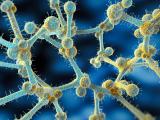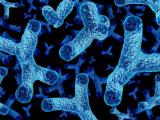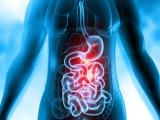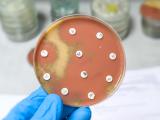In May 2008, a patient who had been transferred to Rush University Medical Center in Chicago from an acute care hospital in Indiana was found to be carrying a strain of carbapenem-resistant Klebsiella pneumoniae (CRKP), a multidrug-resistant "superbug" that's known to cause severe and deadly infections worldwide but was extremely rare in the region at the time.
The patient, who was undergoing chemotherapy, was severely immunocompromised, and the infection had spread to his blood and urine. He died from sepsis within 24 hours of transfer.
Patient movement fuels outbreak
Although this was the first incidence of CRKP colonization or infection at the hospital, Mary Hayden, MD, an infectious disease specialist at Rush, knew that another CRKP infection had been reported in a Chicago hospital in late 2007. So, thinking that something might be going on, Hayden and her colleagues decided to investigate.
The results of that investigation, published in 2011, would reveal a "mile-wide, inches deep" outbreak that began with the CRKP case from 2007 and ultimately spread to 26 hospitals, long-term acute care facilities, and nursing homes over a four-county region of Illinois and Indiana. Of the 42 confirmed and presumed case-patients, 11 died.
What the investigation also revealed was that while these rare and dangerous pathogens can spread in facilities with vulnerable populations and poor infection control, the frequent transfer of chronically ill, high-risk patients among facilities within a healthcare network plays a significant role in propagating regional outbreaks.
In that study, a detailed review of the medical records for each patient in the outbreak and analysis of the exposure network showed frequent movement of patients between hospitals, long-term acute care hospitals, and nursing homes. Within this transmission network, patients were acquiring the pathogen and bringing it with them to different facilities. One facility in particular, a long-term acute care hospital that discharged 16 of the patients to six nursing homes and a hospital, was cited as a critical hub.
While that investigation provided a proof-of-concept that patient-sharing networks play a role in driving regional outbreaks, it left several questions unanswered. According to Hayden, the molecular and epidemiologic tools that they had at the time enabled them to show that the CRKP strain that had entered the region was from an epidemic strain (ST258), and that the resulting strains were closely related, but not much more. The hypothesis that the outbreak had started with one entry of CRKP into a single facility and then spread through the patient network was an intriguing theory, but they could not prove it.
"We couldn't prove it definitively without a more discriminating molecular method," Hayden said in an interview.
High-resolution transmission mapping
Now, nearly 10 years after that outbreak, Hayden and her colleagues, along with researchers from the University of Michigan Medical School, have found a way to confirm those initial findings, combining the initial epidemiologic data with DNA fingerprinting methods to create a more detailed picture of how the patient-sharing network facilitated the outbreak.
In a study today in Science Translational Medicine, Hayden, University of Michigan microbiologist Evan Snitkin, PhD, and others describe how whole-genome sequencing of the isolates from each patient and facility involved in the outbreak yielded a high-resolution version of the transmission map from the initial study. By examining the genetic mutations that occurred in the bacteria over the course of the outbreak and reviewing patient records, Snitkin was able to create an evolutionary tree of the outbreak and pinpoint where patients had acquired the pathogen.
Using these phylogenetic methods, Snitkin said, enabled him and his colleagues to "delineate the transmission chain in a more rigorous way." The fewer mutations between bacterial isolates, the closer they are on the transmission chain and the more likely they represent the spread of the infection from one patient to another at a single facility. Isolates that were less similar suggested infections that had been acquired at different facilities.
"We can reconstruct the tree of mutations that occurred during that outbreak and place patients on that tree," he said. "Then we use the knowledge of where the isolates came from to map where the most likely facility was during the evolution of that pathogen."
Mapping the spread of the CRKP infection from the 2007 index patient through the healthcare network helped clarify that some of the cases had resulted from transmission of CRKP within a single facility in the network, while other patients had brought the bacteria with them from another facility.
In the initial investigation, for example, five patients at an acute care hospital had been found to have CRKP after being at the hospital for several days. With the limited molecular tools at their disposal, Hayden and her colleagues theorized that one patient had imported the microbe into the hospital and then spread it to the other four patients. But when using genome sequencing to get a more detailed picture of the isolates, Snitkin said, "what we saw was that wasn't really the case."
As it turns out, three different patients had brought the CRKP strain into the hospital, and then spread it to two additional patients.
This is an important finding, Hayden explains, because it helped pinpoint that inter-facility spread of the pathogen was what drove the regional CRKP outbreak. This kind of information can help guide measures to control such outbreaks.
"If it's all because one patient comes in and then you have bad infection control, then you would focus very carefully on improving infection control measures within the hospital," Hayden said. "However, if you're constantly being bombarded by new patients coming into the hospital, then you might screen patients on admission and try to figure out where they're coming from."
In addition to confirming that the long-term acute care hospital identified in the initial investigation as a transmission hub was indeed a major early driver of the outbreak, the new study also revealed that an additional acute care hospital, along with a nursing home that was receiving patients from and sending them to both facilities, also played a role. "That was something that wasn't in the initial analysis," Snitkin said.
Potential for real-time use
Ultimately, both Hayden and Snitkin agree that combining the detailed epidemiologic data from the original investigation with genome sequencing enabled them to reach conclusions they wouldn't be able to by using either method on its own. "One of the major take-home points, I think, is that having the genome sequencing data, and really good epidemiological data, is what makes things really clear," said Snitkin.
They also believe that investigators might be able to use these two methods early in an outbreak situation to identify where patients are acquiring infections—knowledge that could aid efforts to curtail the outbreak. To test this hypothesis, Snitkin and his colleagues tried to predict the facility of origin for each patient's CRKP isolate based only on the genomic sequence of the isolates of patients that preceded that patient in the outbreak, and no information from patients treated later. In each case, they were able to predict the facility of origin accurately.
"That implies that if you were using this approach as a tool in real-time to investigate an emerging pathogen like this in a region, that you could identify a particular hot spot much earlier," said Hayden.
Snitkin said that future research, funded by the US Centers for Disease Control and Prevention, will assess whether this model can be used to identify bacterial transmission patterns in healthcare networks around the country and design effective interventions to control regional outbreaks.
See also:
Nov 22 Sci Transl Med study
September 2011 Clin Infect Dis study
























